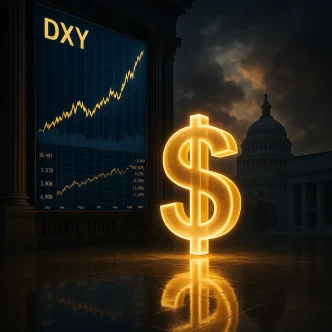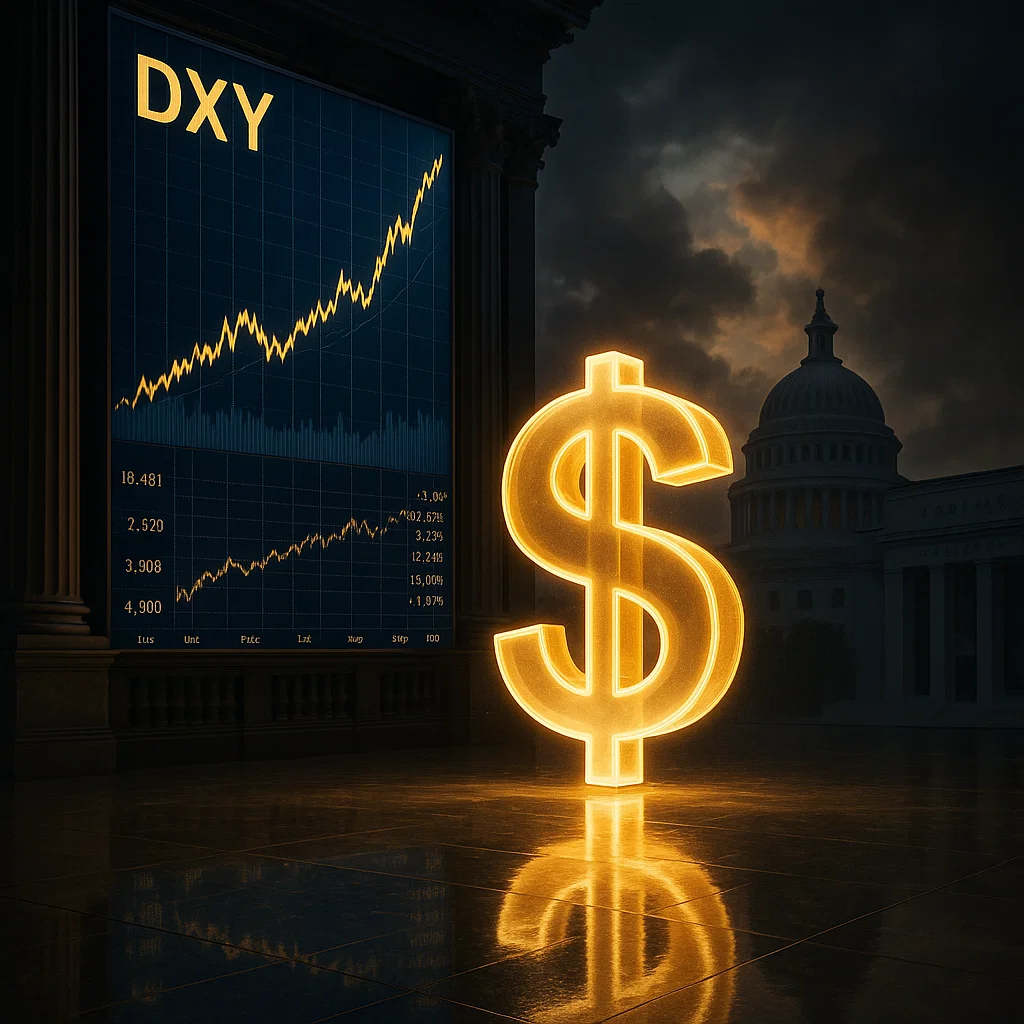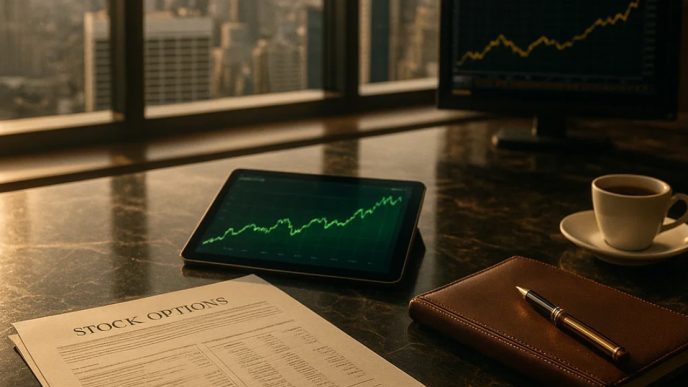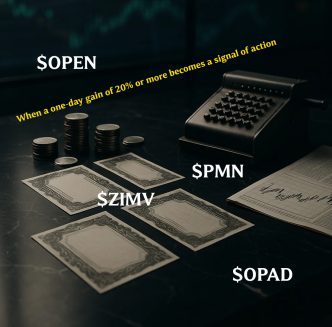Why the DXY Index has become a global benchmark
In the currency and investment markets, there are indicators that set the agenda without too much noise. The U.S. dollar index (DXY) is just one of them. Its chart appears on terminals in London, New York, Tokyo and Singapore. For a trader it is a risk indicator. For a macroeconomist it is a way to track the trends of global stability. And for the investor it is an important clue when choosing between stocks and protective assets.
Since 1973, when the index was introduced with a base mark of 100, it has been a chronicler of economic cycles. Stock market crashes, central bank policy tightening, financial crises and recoveries are all reflected in the behavior of the DXY. And that is why it remains relevant to this day.
The structure of the dollar index
Currency basket: betting on developed economies
The index is calculated based on the weighted ratio of the dollar to six currencies:
- Euro (EUR) – 57.6%
- Japanese Yen (JPY) – 13.6%
- British pound (GBP) – 11.9%
- Canadian dollar (CAD) – 9.1%
- Swedish krona (SEK) – 4.2%
- Swiss franc (CHF) – 3.6%
This distribution emphasizes the strong dependence on the euro and the eurozone economy. In practice, it means that any statement of the European Central Bank is instantly reflected in the quotations of the index. Analysts often argue: why is there still no yuan or Indian rupee in the basket? Perhaps it is an outdated model that does not take into account the changing global balance of power. However, the index remains a convenient and understandable benchmark.
Who shapes the DXY movement
Politics, macroeconomics and global sentiment
Fluctuations in the US Dollar Index are not random. They occur under the influence of many factors. First of all, these are the decisions of the Federal Reserve, inflation reports and macroeconomic statistics. But we should not forget about foreign policy events, including geopolitical conflicts, trade sanctions and global crises.
Tough signals from the Fed usually lead to the strengthening of the dollar. On the contrary, statements about possible rate cuts reduce interest in the US currency. DXY reacts to everything from regulatory meetings to officials’ comments on Twitter.
Impact of the index on the stock market
How the DXY affects stocks and economic sectors
The dollar index has a direct impact on the quotations of the largest American corporations. Especially those that generate most of their revenue overseas. When the dollar appreciates in value, exports become less profitable. As a result, companies lose revenue, and investors reconsider the valuation of their securities.
Investors in the technology sector and industrials pay special attention to DXY. When the dollar is weak, stocks in these sectors feel more confident. And when the index rises, defensive assets and bonds come into play. This is one factor that could be the beginning of a broad rebalancing of portfolios.
DXY and commodity markets
Commodities, gold and the strength of the dollar
Commodity prices, including oil and metals, often move in antiphase with the dollar. When the dollar strengthens, dollar-denominated commodities become more expensive for foreign buyers. This reduces demand and pressures quotations. However, in times of crisis, the dollar and gold can rise at the same time. This is no longer just economics – it is the psychology of mass flight to safe assets. For investors, the behavior of the DXY is a signal of how to act in commodity markets. If the index is declining, it may make sense to buy oil or gold futures. If it’s rising, it may be worth reconsidering such positions.
How to use the index in your investments
DXY as part of a strategy
The US dollar index is not only an indicator, but also an independent instrument. There are a number of ways to include it in the investment process. This can be buying futures or options on the ICE platform. ETFs are also available, for example, Invesco UUP, which repeats the behavior of DXY. And the index is also used to hedge currency risk in international portfolios.
Funds like BlackRock and Vanguard use DXY in their algorithmic risk assessment models. For them, the index is not just a chart, but a key macro valuation parameter. This allows them to build systematic strategies rather than guessing.
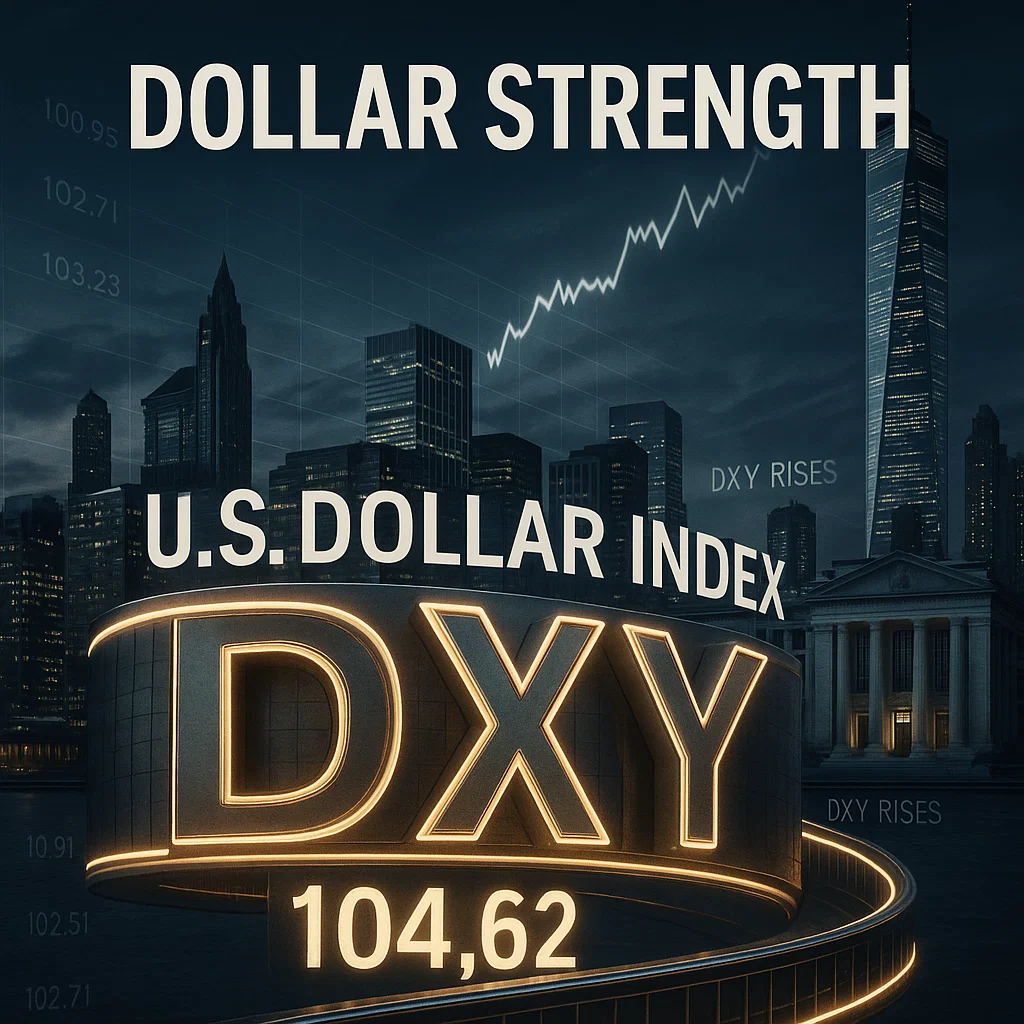

Who invests in DXY: the role of large funds
How institutional players work with the index
Some of the world’s largest investment funds and management companies consider the dollar index as a strategic tool in their global portfolios. Among the most active users are BlackRock, Vanguard, JPMorgan Asset Management and Bridgewater Associates. These firms apply DXY in risk assessment models, in macro analytics, and in rebalancing assets across countries and sectors.
Dollar-based ETFs, such as the Invesco DB USD Index Bullish Fund (ticker UUP), are among a lineup of instruments through which funds can gain exposure to dollar movements. This is particularly relevant during periods of volatility when the dollar acts as a protective asset. In addition, some hedge funds use DXY in algorithmic strategies for short-term trading and currency arbitrage. This adds volatility, but also increases liquidity and the speed of market reaction to macro backdrop changes. The use of the DXY in an institutional environment demonstrates how important this index is in modern investment thinking. It has become not only a barometer of macro trends, but also the foundation for calibrated global capital allocation strategies.
Practical application of DXY in trading
When the index helps you make decisions
For a trader, DXY is a filter. A rise in the index signals a decrease in risk appetite. In such conditions, traders are more likely to close long positions in stocks and go into more reliable instruments, such as bonds or cash.
On the contrary, a weaker dollar opens the way for growth assets. Companies from the innovation, biotechnology and new technology sectors are particularly benefiting. At these times, interest in emerging markets and riskier strategies increases.
Actual DXY behavior in 2025
What’s happening right now
As of mid-2025, the US Dollar Index is fluctuating between 103 and 105 points. This reflects a situation of uncertainty. The Fed has taken a wait-and-see stance. Inflation remains near target levels. The market is cautious and is in no hurry to lay the scenario of a sharp change in rates.
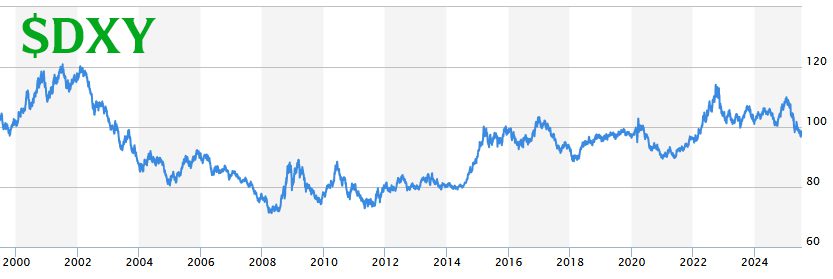

In such conditions, the dollar is stable, but does not show strong momentum. However, the situation may change dramatically. New inflation data, employment reports or unexpected statements from Fed officials could shift the balance. With positive news, the DXY could easily rise to 107. If macro indicators deteriorate, it could fall to 100.
Important events for index movement
Investor’s financial calendar
- Fed meetings (eight times a year on average)
- Inflation data (CPI, PCE)
- Monthly employment reports (Non-Farm Payrolls)
- Reports from market influencing corporations (e.g. Apple, Microsoft, Tesla)
- Major geopolitical events, including conflicts and sanctions
These dates need to be kept in focus. Because it’s at times like these that the index can change trajectory and trigger new investment trends.
How investors integrate DXY
Macro filter and strategy element
For many investors, the dollar index is a filter in asset selection. If the index is rising, the portfolio increases its allocation to bonds, gold and cash. If it falls, the focus shifts to growth stocks and emerging markets.
Effective strategies use DXY in combination with other indicators: inflation rates, bond rates, volatility. This allows you to build more stable and balanced portfolios.
What an investor needs to remember
The U.S. Dollar Index is not just a number in the news feed, but a reflection of global demand for the dollar, a signal of confidence in the U.S. economy, and a key to understanding global macro trends.
It can help determine investor sentiment, the strength of risk appetite and the vector of global capital flows. Even if you don’t trade the dollar directly, its behavior should be under close scrutiny.
Learn to look at the market through the lens of DXY and you will see more. It won’t make accurate predictions, but it will allow you to understand where trends are emerging. And therefore, where opportunities are opening up.
For those interested in the impact of macroeconomics on stock markets, we recommend our analytical article on the yield of 10-year US Treasury bonds. This is a key benchmark for investors around the world, helping them assess the outlook for inflation, Fed policy, and the sustainability of market trends. The article will be particularly useful for those who are developing strategies at the intersection of currency and debt instruments.

